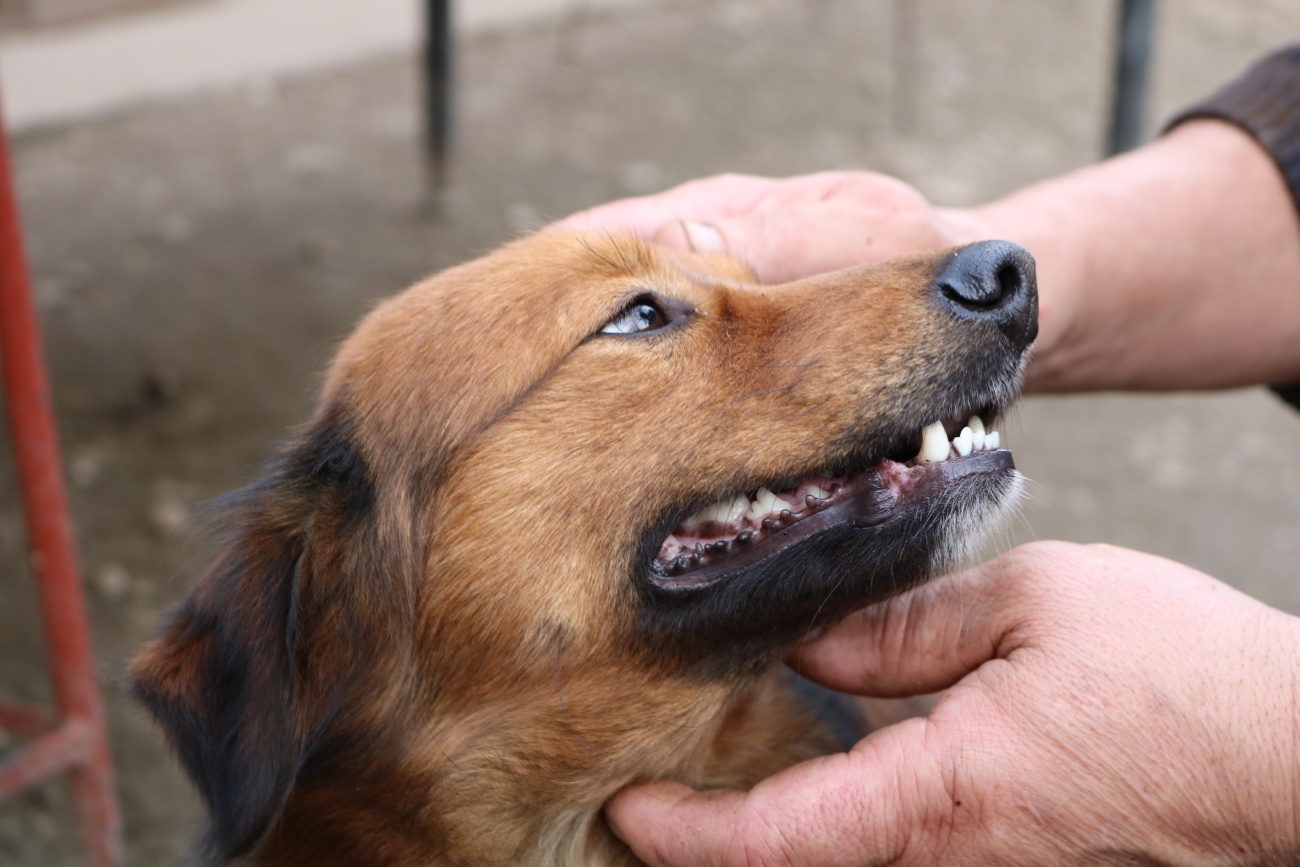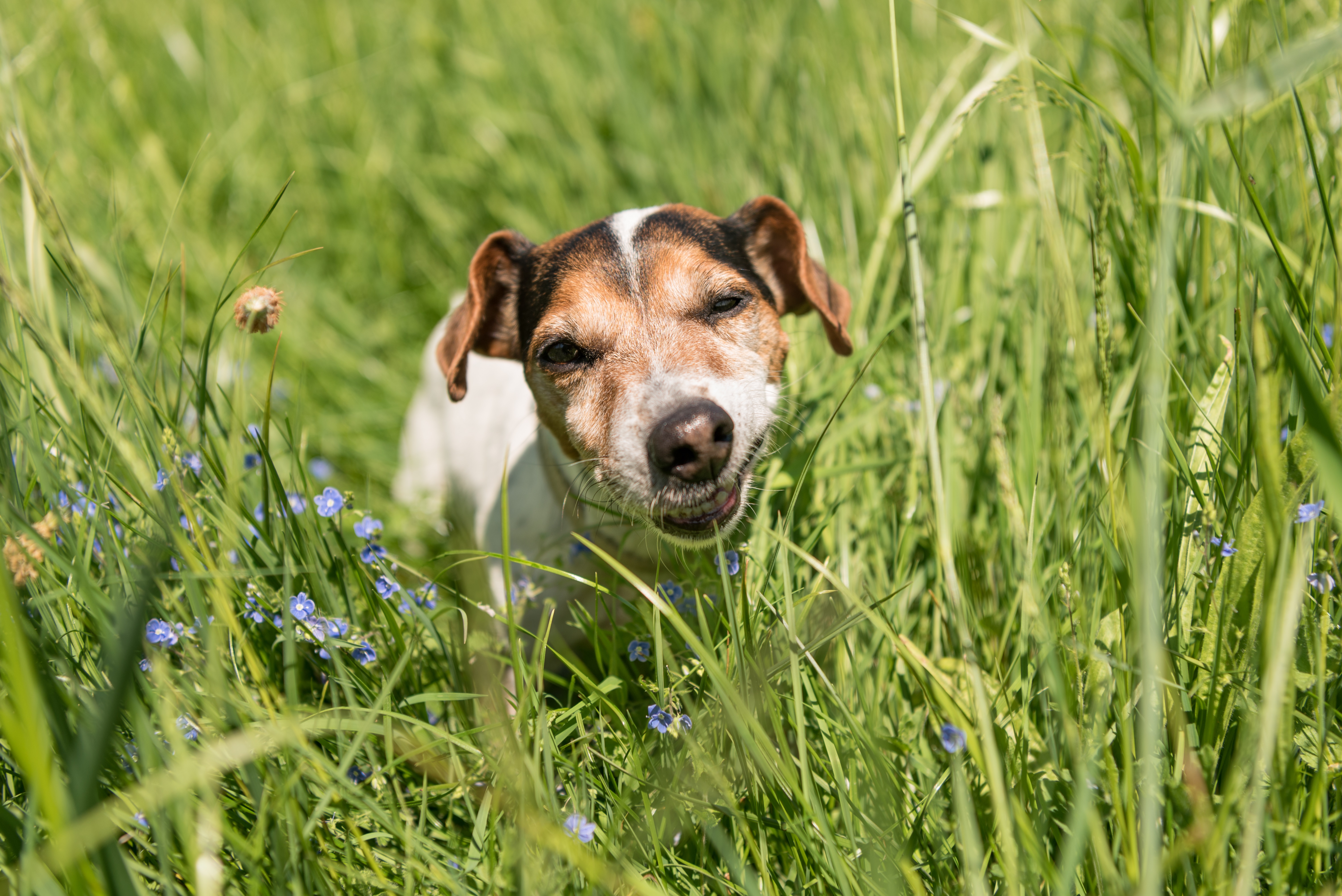
How to care for a terminally ill dog
17th March, 2022
Looking after an older dog whose illness is only going to get worse can be a distressing experience for everyone involved – for you, your family and, last but definitely not least, for the dog themselves.
However, there are certain steps you can take to ensure that your dog's final few months with you are as contented and pain-free as possible. We're going to run through a few things you might want to think about when preparing for your dog's final stretch of life.
This time can be very difficult for humans and animals alike, but a suitable older dog insurance policy may be able to help on various levels. As well as contributing towards the costs of medical tests and interventions, your older dog insurance may also pay out towards burial fees, and may even offer a helpline for you to call when you need a sympathetic ear.
Before we get onto the essentials for caring for a terminally ill dog, let's look at some of the signs that your dog may be approaching the end of their lives.

Signs that your terminally ill dog is getting worse
Lethargy and loss of appetite
As dogs get weaker for the final time, they will experience a noted drop in their appetite levels. They may only want to eat a more restricted range of foods than usual: they may even avoid eating altogether.
You will probably also notice – partly because of this reduced appetite, and partly because of the effects of advanced ill health – that your dog seems unusually lethargic and tires easily.
They will often want to sleep more and they may want to spend more time alone, unlike their previously sociable selves.
Loss of bowel and/or bladder control
As dogs age, their digestive tract (and their intestine, in particular) starts to work less efficiently than before. You may well notice this in the form of bowel problems. They may develop incontinence – an ability to regulate the flow of urine or faeces. Older dog incontinence may be a challenging thing for any owner to cope with, in particular, urinary incontinence which is fairly common occurrence in older dogs.
Your dog may pee involuntarily; you may see urine dripping from their behind. You might, alternatively, notice wet patches either on their fur or on their bedding.
Causes can include spinal problems, where nerves within the spine that control the bladder can cause incontinence; a urine infection or blockage; or injury or tumours to the urinary tract.
If your dog is otherwise well, you should arrange for a vet to take a look at them as soon as possible as many of these conditions can be treated quickly and effectively. If you have an older dog insurance policy in place, you may be eligible for some financial help with the costs of these procedures.
However, if it is clear that your dog's health is failing in other ways, it may be more a case of living with this condition as best you can.
Loss of interest
Lastly, you may notice that your dog generally loses enthusiasm for the things they used to love doing before. This is because, as they become weaker and more immobile, these activities are likely to become more painful and difficult. They may not enjoy playing with that favourite toy, or digging a hole in the garden, anymore.
This can be sad for a dog owner to witness – but there will still be things that you and your pet can enjoy doing together at this late stage, and we'll run through some of these further down this article.
So, how to deal with your older dog's final stages? How to make sure that they are as comfortable as possible, and to ensure that you and your household manage the goodbye process with minimum pain?
Things you can do to make your dogs' final months easier
Think about what medical help you want
This is a tricky one, as of course it doesn’t feel right to measure your love for your dog in pounds and pence. However, the fact remains that, when your dog reaches an advanced old age and/or the latter stages of a terminal illness, you will have a few choices to make. You can decide, for example, to opt for certain tests that may tell you how good or bad the prognosis is, or for certain medical interventions that may either ease any suffering your dog is experiencing, or prolong your time together for a certain time. But which of these tests or interventions is actually worth it?
Well, the answer to this will vary from one case to the next. There are likely to be treatments or tests available – but will they prolong your pet's life to any meaningful degree, and/or ease their suffering? If the answer to either is yes, and if some of the costs of these treatments or tests will be met by your older dog insurance, then you may well want to go ahead.
Just be aware that, while your older dog insurance policy can help with the financial costs of these medical interventions, the physical and emotional costs of attending treatment sessions and having your dog's prognosis fluctuate may be harder to bear.
Make a 'quality of life' checklist
Around 20 years ago, Dr. Alice Villalobos, a veterinary professional, put together something called the HHHHHMM Quality of Life Scale. In essence, this uses a series of factors such as pain levels, breathing problems, and hygiene issues to evaluate – in fact, to put a numerical score on – what sort of quality of life your senior dog is currently enjoying. From this score, you can then have a better mental picture of whether or not it will be worthwhile, humane or kind to prolong their life further.
Here in the UK, the ultimate decision on when, or whether, to put down a pet rests with the owner. However, it's always recommended to consult with a vet as well as making your own thorough evaluation of your pet's quality of life.
Questions posed by the HHHHHMM Quality of Life Scale include:
- How much pain is the dog experiencing?
- Are they able to breathe normally?
- Are you / they able to meet their grooming and hygiene needs?
- Do they still have control over their bodily functions, and mobility?
- Can they eat and drink normally?
- Are their vision and hearing at normal levels?
- Can they still do the things they love to do best?
- Are they comfortable and content? Or do they seem depressed or anxious?
- Can they socialise normally with you, other humans, and other dogs? Or do they tend to take themselves off to be alone a lot?
The HHHHHMM Quality of Life Scale funnels these various health and wellbeing issues into seven key questions about your dog's quality of life. It then invites you to rate each one on a scale of 1 to 10, where 1 indicates a very poor quality of life, with many more bad days than good days. A score of 5 would indicate that, with this particular wellbeing aspect, your dog has an equal number of good and bad days. Scoring 10, meanwhile, would mean that your dog is living life normally, with no (or very few) bad days.
After each factor is rated from 1-10, the seven numerical answers are then added together to give a number between 1 and 70. A score of 36 or above indicates an acceptable quality of life, while 35 and below should indicates that your dog’s quality of life is poor, and that euthanasia should at least be considered.
If you need advice on whether it’s time to make this difficult decision, you can always call the Petwise 24-Hour Helpline for advice from veterinary professionals.

Involve children in your pet's final journey
If you share your household – and your beloved pet – with children, this is sure to be an extremely emotional time for them as well. The crucial difference here is that children's understanding of the world around them, of life and death, and of how to manage their emotions is still developing.
For this reason, just how you broach the subject of your pet's illness and eventual passing will vary from child to child. Factors including their age, emotional development, psychological makeup, and relationship with the pet must be taken into consideration.
In fact, the general consensus is that, even with younger children, it's better to be quite honest with them about what is happening, and to let them say goodbye to a beloved pet in whatever way works best for them.
Of course, younger children may not yet have reached a proper understanding of exactly what death entails. They may have questions about what will happen to their much-loved pet. You've said they won't be around any longer, for instance – so, where are they going exactly? Elsewhere, using the euphemism that your pet is going to be put to sleep may be counterproductive as it may make children afraid to go to sleep themselves. Similarly, telling them that their pet has to go away will probably only result in the question: so when will they be back?
On the other hand, older children will have a better understanding of illness and death. Indeed, letting older kids play a part in your dog's final months can be very useful in helping them to process the fact of death. Allow your older children to talk to the vet, and to raise any questions they might have about your pet's illness and mortality. Speak to them honestly and openly about the decisions you're making about tests, interventions and even euthanasia. If it seems appropriate, involve them in these decisions.
Think about the final arrangements
It may be a difficult topic for discussion, but you should start thinking about the arrangements for finally saying goodbye to your pet.
For example, would you rather bury your pet, or have them cremated? Here in the UK, you may legally bury your dog in the grounds of the home where they lived. A few rules apply – the land must be owned, not rented; and the dog must not be buried near a water source.
Cremation is also an option, and is likely to cost between £130 and £200. You may scatter the ashes somewhere outdoors – on the route of your pet's favourite walk, for example – but you would need permission from the landowner.
When it comes to euthanasia, burial, and grieving, you may be interested to know of two features of our older dog insurance here at Petwise. We are pleased to provide Farewell Cover on all our policies. This means that we will pay up to a maximum of £150 for costs incurred if your pet is put to sleep, or towards the costs of cremation or burial. Note that this is completely separate to your veterinary fee allowance, and claiming on either one will not affect the other.
We also provide a professional, confidential helpline service, that allows you to talk for as long as you need to, about your pet's illness or passing and your feelings at this time. This help and advice is available at all times of the day and throughout the year, and the number to call is 0333 003 2258. These are just two of the many compelling reasons to take out some older dog insurance: you can find a full rundown of all the benefits we offer on this page of our website.
Make your last days together happy and meaningful
Once you know what sort of time frame you have left with your much-loved pet, it's time to start planning this remaining period together. This will reinforce the bond between you: it will also keep your dog feeling loved and cherished right up to the end, and will also create some wonderful memories for yourself and your family. In short, it's crucial to make living, not dying, the focus of this period.
This is also the time to do a few of your favourite things together, to spoil your furry companion, and to create a bank of memories to return to often in the years after your dog has passed.
It's a great idea to create a 'bucket list' – a to-do list of great experiences that you want to share with your pet. Get everyone in the family together to create this list, so that everyone feels included and is able to say goodbye to the dog in the way they want. If there are other people beyond the immediate family who also had a bond with your pet, you may want to include them, too.
Your 'bucket list' might include:
- A visit to their favourite place – a much-loved walk, a favourite beach, perhaps a date with a doggie friend in a local park
- Remove distractions – your phone, the TV, the internet. You want to give your dog your full attention at this time.
- Taking lots of pictures and videos with your pet.

5 ways to make your dying dog more comfortable
Here are some more ways to make sure your dog's final time with you is as comfortable and contented as possible.
1. Give them the best possible diet
Your pet is likely to have some fairly specific dietary needs during their final months, as many of the conditions from which older dogs suffer have to be treated via a special diet and/or medication.
As a general rule, your dog will need to be able to digest all the nutrients in their food, at a time when their digestive system probably won't be working at its best. Try to make their meals as appetising as possible, and make sure that they are getting all the nutrients they need. This could be the difference between a contented old age and a time of feeling weak, listless and depressed.
Consider any other needs too – for example, some older dogs will find that their digestive system no longer copes well with dry food, so you may need to soak their food overnight and/or grind it in a food processor.
Elsewhere on this blog, we've looked in more detail at the importance of nutrition in older pets.
2. Make sure your home is as safe and supportive as possible
You may need to adapt your home to make it easier for your dog to get around and to withdraw anything potentially harmful from their reach. For example, if they have any dental issues or a tumour which is susceptible to bleeding, it's best to keep any chew toys away from them. If they are prone to bleeding or incontinence, make sure you have plenty of towels and so on near their sleeping area.
3. Keep the layout of your home as consistent as you can
If your older dog is experiencing sight loss, avoid moving furniture so they can find their way around.
Spend some time guiding your dog around the house, and keep them away from any potential dangers. Loss of sight can be a distressing time for a dog, so try to take some time to lift their mood with toys, games and affection.
We've got more advice on older dogs and eyesight in this article, Common signs that your dog's eyesight is getting worse.
4. Be creative with their pain relief
If your dog is in pain, your vet should be able to help by prescribing some appropriate pain-relief medication. But there are some things you can do to complement these more traditional medicines.
For instance, evidence suggests that dogs enjoy a good gentle massage. This can be soothing and comforting for them, and a great bonding moment for you both. Before bedtime is a good time to do this, as it will soothe them and help them to sleep. Ask your vet if this would be appropriate for your dog.
5. Spoil them!
Yes, you read that right: within reason and following dietary and other guidelines, spoil them rotten! You want their final days and weeks to be a very happy time, so surround them with their favourite toys, and give them the food and treats they love.
The positive emotions they will experience from things like a good cuddle or a favourite food – as well as, simply lots of time spent with you, their beloved human – will greatly add to the quality of life at this time. So remember to devote lots of time to doing the things that your dog loves, and can still enjoy.
Older dog insurance: looking after your beloved friend until the end
As we've seen, a good older dog insurance policy will be able to help at several points as your older pet undertakes their final journey.
Why not contact us to find out more – or get a quote to insure your trusted old friend?